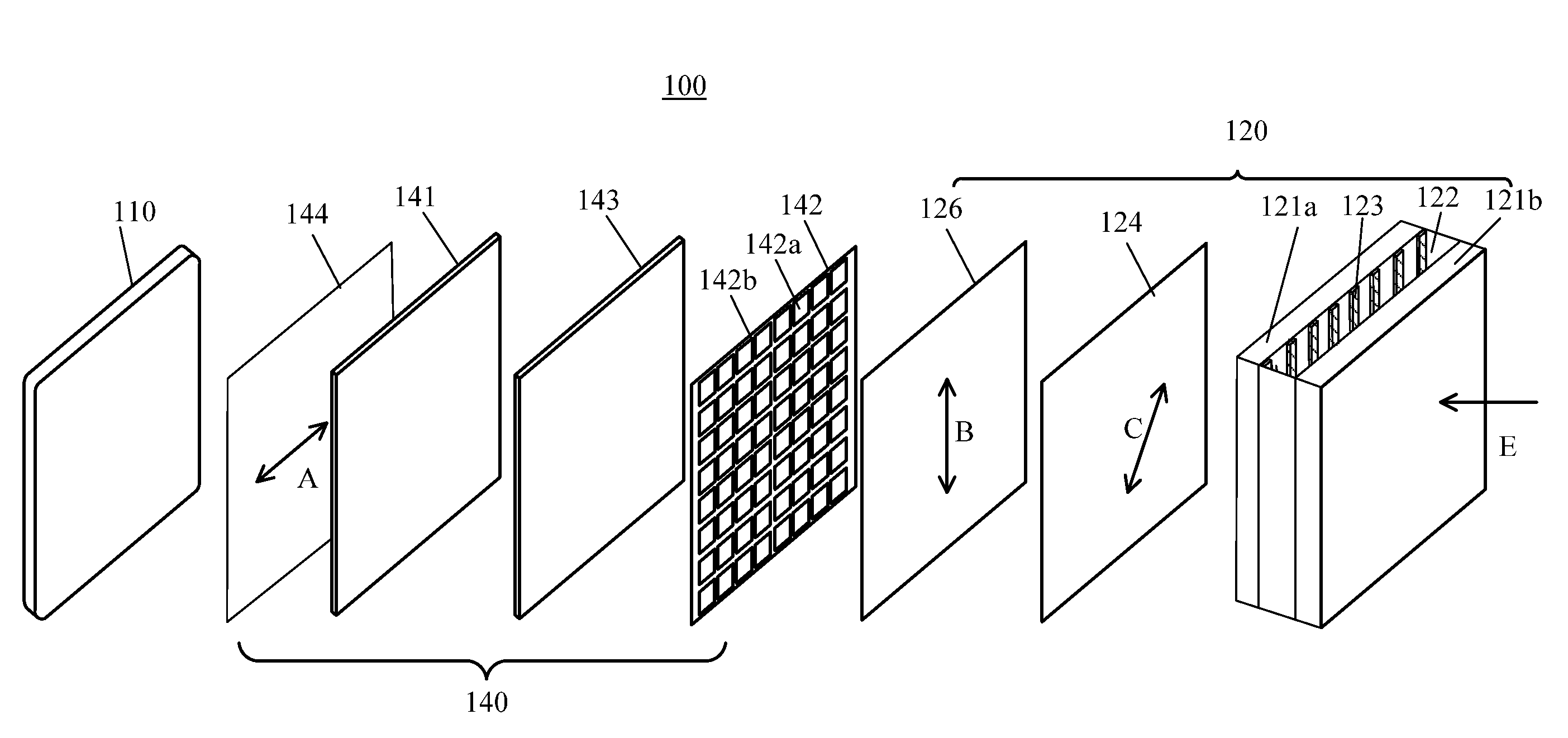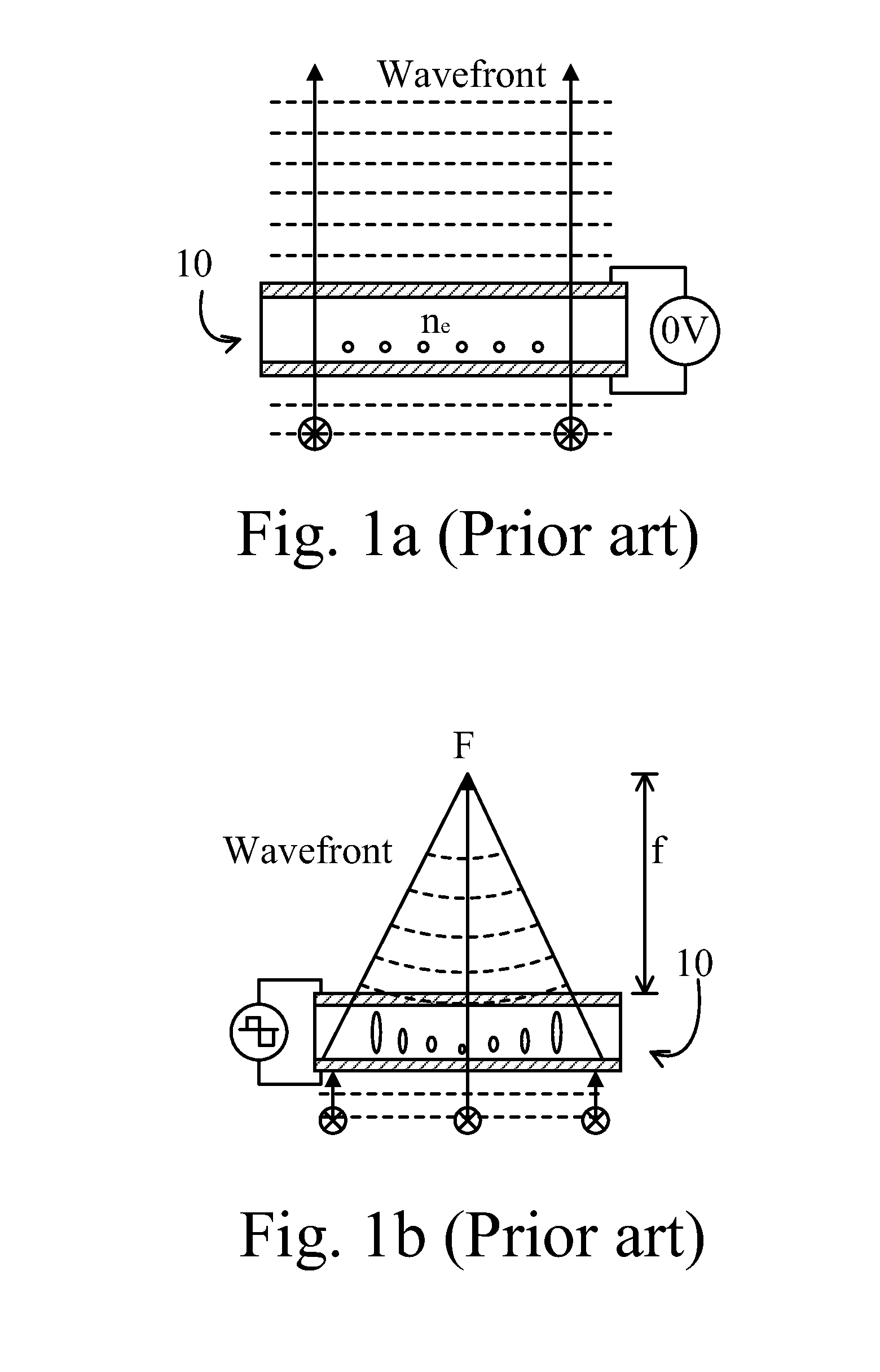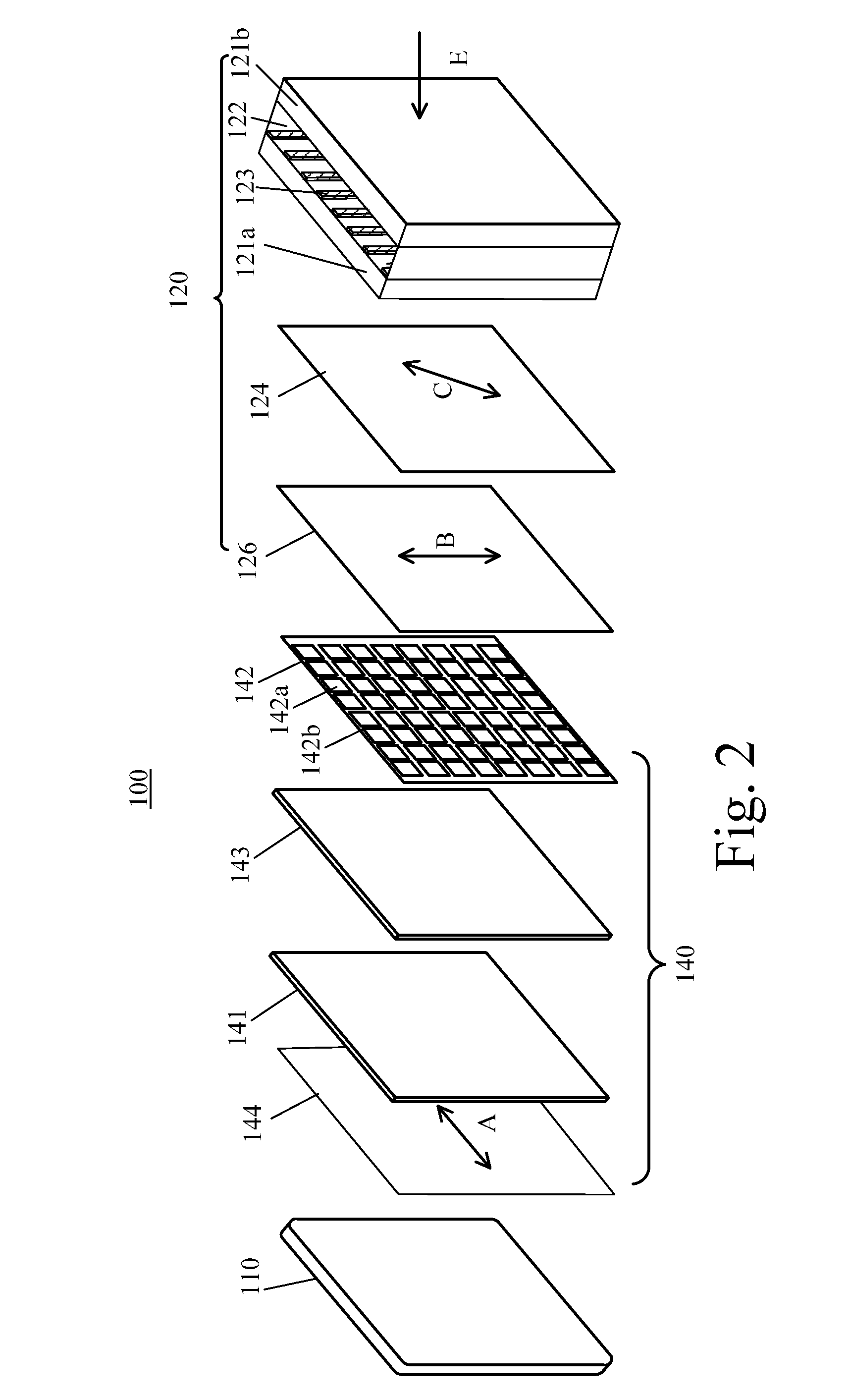Liquid crystal lens unit and stereoscopic display
a stereoscopic display and liquid crystal lens technology, applied in non-linear optics, instruments, optics, etc., can solve the problems of loss of lens power, cell thickness, and increase the cost, so as to reduce the cost, the effect of increasing the lens power and reducing the cell thickness
- Summary
- Abstract
- Description
- Claims
- Application Information
AI Technical Summary
Benefits of technology
Problems solved by technology
Method used
Image
Examples
Embodiment Construction
[0028]Spatially relative terms, such as “beneath”, “below”, “lower”, “above”, “upper” and the like, may be used herein for ease of description to describe one element or feature's relationship to another element(s) or feature(s) as illustrated in the figures. It will be understood that the spatially relative terms are intended to encompass different orientations of the device in use or operation in addition to the orientation depicted in the figures.
[0029]FIG. 2 is a schematic diagram showing a stereoscopic display 100 according to the present invention. A viewer can switch between 2D and 3D modes on the stereoscopic display 100 to watch 2D and 3D images. The stereoscopic display 100 comprises a backlight module 110, a display panel 140, and an LC lens unit 120.
[0030]The backlight module 110 provides a uniform planar light source for the display panel 140. The backlight module 110 can be formed by a direct-type light emitting diode (LED), a direct-type cold cathode fluorescent lamp ...
PUM
| Property | Measurement | Unit |
|---|---|---|
| refractive index | aaaaa | aaaaa |
| thickness | aaaaa | aaaaa |
| focal length | aaaaa | aaaaa |
Abstract
Description
Claims
Application Information
 Login to View More
Login to View More - R&D
- Intellectual Property
- Life Sciences
- Materials
- Tech Scout
- Unparalleled Data Quality
- Higher Quality Content
- 60% Fewer Hallucinations
Browse by: Latest US Patents, China's latest patents, Technical Efficacy Thesaurus, Application Domain, Technology Topic, Popular Technical Reports.
© 2025 PatSnap. All rights reserved.Legal|Privacy policy|Modern Slavery Act Transparency Statement|Sitemap|About US| Contact US: help@patsnap.com



